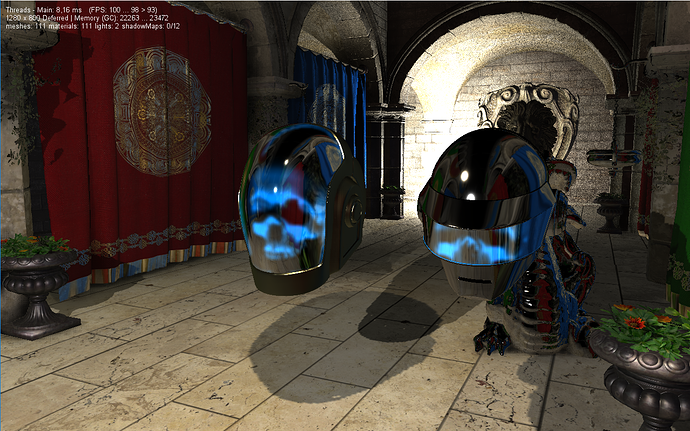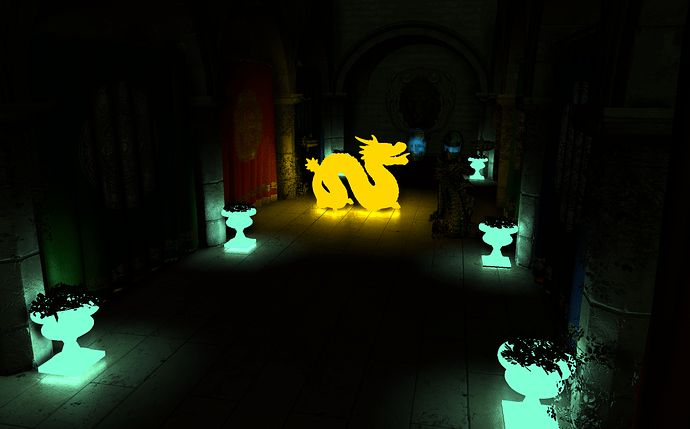Due to popular request I reimplemented the feature!
Yay!
I also implemented highly experimental screen space emissive materials
Plus some SSAO!
Let’s talk briefly about the “holograms”
With F1 you can cycle rendertargets, you can find the hologram rendertarget at 8th position or so.
You can change the rendering style with the console command g_HologramUseGauss true or not. If true it will use a gaussian blur to read from the hologram map.
In the assets I added a new material
hologramMaterial = CreateMaterial(Color.White, 0.2f, 1, null, null, null, null, null, MaterialEffect.MaterialTypes.Hologram, 1);
If you have a material with the type hologram it will only get rendered to the hologram texture.
To have materials project the hologram you need to set the materialtype to
MaterialEffect.MaterialTypes.ProjectHologram
In the assets class, where I load all my assets you can find the function ProcessHelmets(), where I assign specific material values to the submeshes of the helmet. You can see the visor uses ProjectHologram, while some outlines use Hologram, so they get incorporated.
Screen space emissive materials are inherently flawed but were a fun experiment.
Currently the limitation is that it doesn’t work with submeshes, basically it’s only good with a model with only 1 submesh. Change the objects material to have a type of MaterialEffect.MaterialTypes.Emissive to make it work.
g_Emissive … can change some properties.
new Console variables for ssao are also available, just type in ssao and see what’s there.








